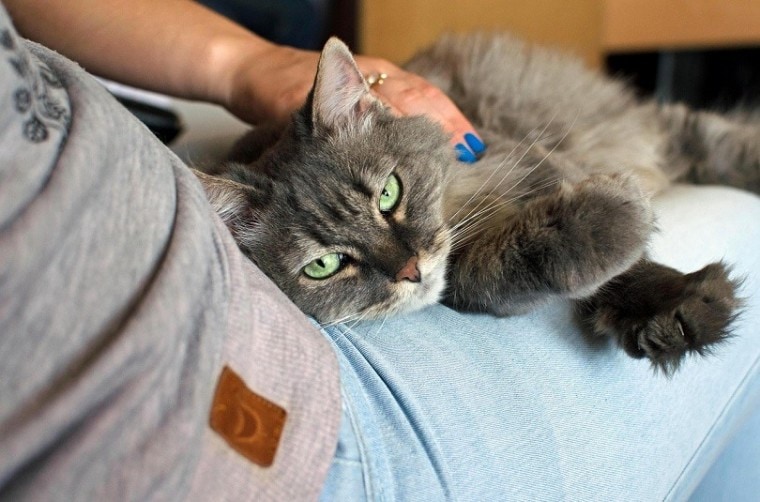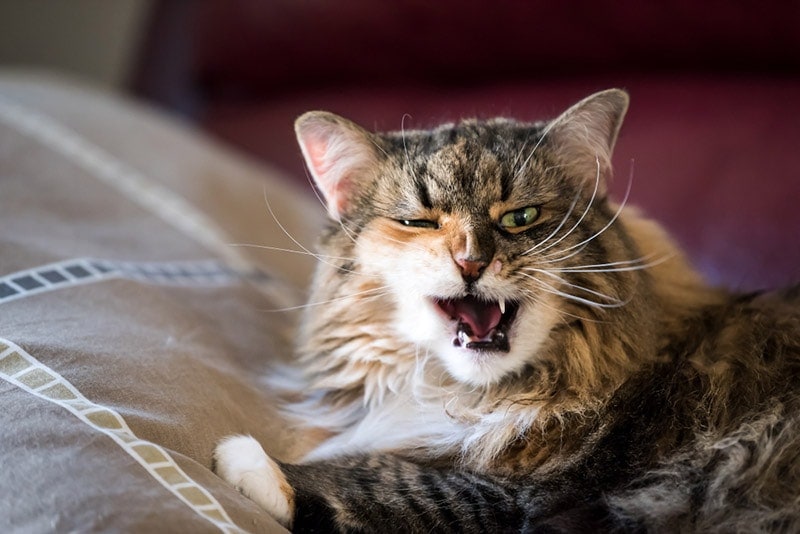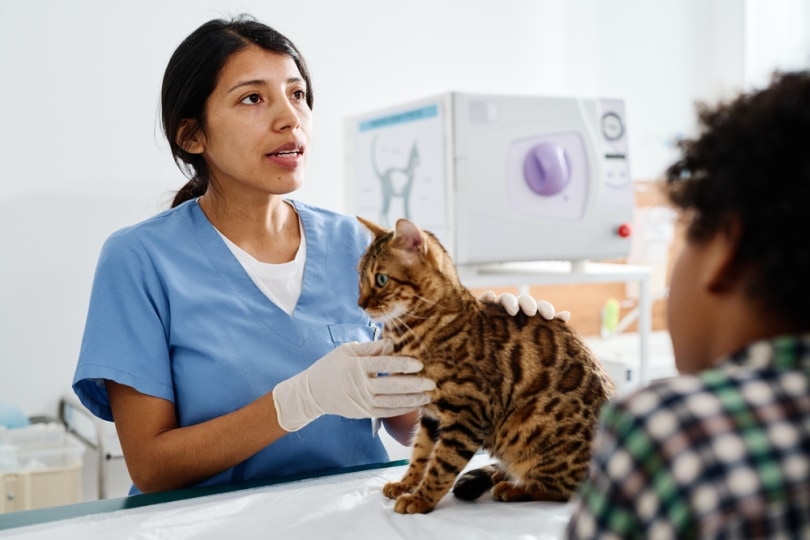
As cat owners, we like to know as much as possible about our pets, including their normal blood pressure range. High or low blood pressure can be a sign of an underlying health condition that always requires medical attention. If you would like to know more, keep reading as we provide several tips and tricks to help you determine if your cat’s blood pressure is within the normal range.
What Is the Normal Blood Pressure of a Cat?
A cat’s normal blood pressure range is generally between 120 and 150 mmHg for systolic pressure (the higher number) and 70 and 90 mmHg for diastolic pressure (the lower number).1 However, these values can vary depending on various factors, such as the cat’s age, breed, weight, and overall health status. Hypertension starts to occur when systolic pressure is above 150 mmHg.
| Systolic Pressure | Condition |
| <150 | Normal |
| 150–159 | Prehypertension |
| 160–179 | Hypertension |
| >= 180 | Severe Hypertension |
What Are Signs That My Cat’s Blood Pressure Is Not in the Normal Range?
Look for Signs of Hypertension
High blood pressure in cats is often secondary to an underlying disease, such as chronic kidney disease or hyperthyroidism; however, primary hypertension is also seen. Signs of hypertension will depend on the organ that gets damaged by it (eyes, brain, kidney, or heart).
Signs may include dilated pupils, blindness, and neurological signs like seizures. You may also notice blood in the clear part of the eye, and they might start bumping into objects in your home that they would normally avoid. Severe hypertension can cause brain damage, with signs ranging from depression to seizures.
Look for Signs of Hypotension
Low blood pressure is equally dangerous and may indicate an underlying health condition, such as heart disease, severe infections, or blood loss. Signs of low blood pressure in cats may include weakness, lethargy, and fainting. Other signs include pale gums, fast breathing, and cold extremities.
Monitor Your Cat’s Behavior
A healthy cat should be alert, active, and playful. If your cat is lethargic, disoriented, or confused, that could indicate abnormal blood pressure levels, especially if the signs are sudden and out of character for your pet.

What Causes My Cat’s Blood Pressure to Get Out of Normal Range?
How Can I Check to See If My Cat’s Blood Pressure Is Within the Normal Range?
Veterinarian Consultation

A veterinarian is the best resource for determining a cat’s normal blood pressure range. A vet can measure your cat’s blood pressure during a physical exam and tell you if it’s within the normal range. If your cat has any conditions that can lead to abnormal blood pressure or as your cat ages, regular veterinary check-ups are essential for monitoring your cat’s blood pressure over time.
1. Doppler Blood Pressure Monitor
A Doppler blood pressure monitor is a non-invasive method that uses a small cuff placed around the cat’s leg or tail. The cuff inflates and deflates while a probe detects blood flow sounds in the artery, allowing for the measurement of blood pressure.
2. Oscillometric Blood Pressure Monitor

An oscillometric blood pressure monitor is another non-invasive method using an inflatable cuff around the cat’s leg. The cuff inflates and deflates while the monitor detects pressure changes, allowing for the measurement of blood pressure.
3. Invasive Blood Pressure Monitoring
Invasive blood pressure monitoring involves directly inserting a catheter into the cat’s artery. Vets only use this method to measure blood pressure for critically ill cats in a hospital setting.
Tips for Keeping My Cat’s Blood Pressure Within Range
Summary
The best way to monitor your cat’s blood pressure is to schedule regular check-ups with your veterinarian, especially as your cat ages, who has the tools and experience to get an accurate reading.
If your cat has a medical condition that requires more frequent monitoring, you can speak to your vet whether purchasing a blood pressure machine would be beneficial for you. With one of these, you usually only need to place a pad over a cat’s paw while the machine does the work, and it can be quite accurate with the correct training from your vet.
If you notice any changes to your cat’s eyes, sight, or behavior, contact your vet as soon as possible to check for any problem related to your cat’s blood pressure
Featured Image Credit: zavalnia, Pixabay







